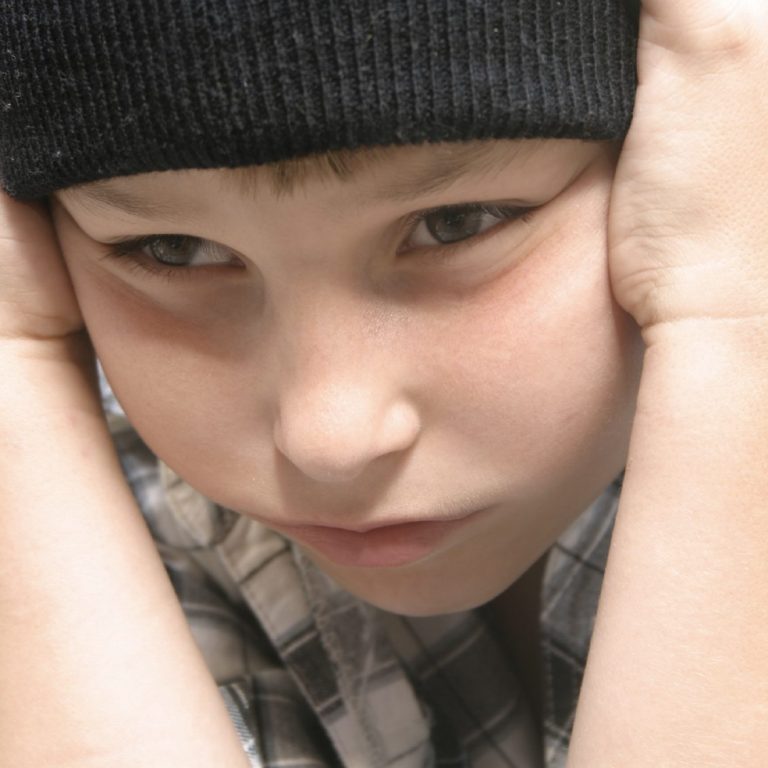
The Surprising link between ACE's and health outcomes: Exploring the coloration
Adverse Childhood Experiences (ACEs) have garnered increasing attention in recent years for their profound impact on various aspects of life. From mental health to social relationships, ACEs, which include abuse, neglect, and household dysfunction, can leave lasting scars. However, emerging research suggests another dimension to this complex issue—the potential correlation between ACEs and health outcomes. This article delves into this intriguing connection, shedding light on how early life adversity might influence physical health later in life.
Understanding Adverse Childhood Experiences (ACEs): ACEs encompass a range of traumatic events occurring before the age of 18, including physical, emotional, or sexual abuse, neglect, and household dysfunction such as substance abuse, mental illness, parental separation, or domestic violence. These experiences can disrupt healthy brain development and shape lifelong patterns of behavior and health.
The ACEs Study: Pioneered by Vincent Felitti and Robert Anda in the 1990s, the Adverse Childhood Experiences Study is a landmark investigation that laid the groundwork for understanding the impact of childhood trauma on health. The study revealed a startling correlation between the number of ACEs an individual experienced and their risk of developing a plethora of health issues later in life, including chronic diseases like heart disease, diabetes, and even mental health disorders such as depression and anxiety.
The Biological Pathways: Researchers have proposed several mechanisms through which ACEs may influence physical health. Chronic stress in childhood can dysregulate the body's stress response system, leading to long-term alterations in hormonal and immune function. This dysregulation may predispose individuals to inflammation, a key driver of many chronic diseases. Moreover, unhealthy coping mechanisms adopted in response to trauma, such as substance abuse or overeating, can further compound health risks.
Psychosocial Factors: Beyond biological pathways, psychosocial factors play a crucial role in the ACEs-health outcomes connection. Childhood trauma can impair socioemotional development, affecting one's ability to form healthy relationships and cope with stress. These difficulties may contribute to risky behaviors, poor adherence to medical advice, and decreased access to healthcare—all of which can adversely impact health.
The Intergenerational Transmission: Compounding the issue is the phenomenon of intergenerational transmission, whereby the effects of ACEs are perpetuated across generations. Adults who experienced trauma in childhood may struggle to provide stable, nurturing environments for their own children, perpetuating a cycle of adversity and poor health outcomes.
Implications for Healthcare: Recognizing the link between ACEs and health outcomes is crucial for healthcare providers. Screening for ACEs in clinical settings can identify individuals at heightened risk for chronic diseases, mental health issues, and substance abuse. Moreover, trauma-informed care approaches, which prioritize sensitivity to the impact of trauma on health, can improve patient outcomes and foster resilience.
Prevention and Intervention: Efforts to prevent and mitigate ACEs are essential for promoting lifelong health and well-being. Early childhood interventions aimed at supporting families and addressing social determinants of health can buffer against the adverse effects of trauma. Additionally, programs focused on resilience-building and trauma-informed education can empower individuals to overcome early life adversity and lead healthier lives.
Conclusion: The correlation between ACEs and health outcomes underscores the far-reaching impact of childhood trauma on physical well-being. By understanding and addressing the root causes of adversity, we can pave the way for a healthier, more resilient society. Through targeted interventions, supportive environments, and trauma-informed care, we can break the cycle of ACEs and foster a future where every individual has the opportunity to thrive.

The lingering shadow: How childhood problems impact adulthood
Introduction: Childhood is often perceived as a time of innocence, joy, and boundless imagination. However, for many individuals, it can also be a period marked by challenges, traumas, and difficulties that leave lasting scars. While some may believe that the passage of time heals all wounds, the reality is far more complex. Certain childhood problems can cast a long shadow, influencing various aspects of one's life well into adulthood.
Impact of Trauma: Childhood trauma, whether it be physical, emotional, or psychological, can have profound and enduring effects on an individual's mental health and well-being. Events such as abuse, neglect, or witnessing violence can shape neural pathways, leading to heightened stress responses and a predisposition to mental health disorders such as anxiety, depression, and post-traumatic stress disorder (PTSD) in adulthood.
Attachment Issues: The quality of early attachments formed with caregivers lays the foundation for future relationships. Children who experience insecure attachments, characterized by neglect, inconsistent care, or separation, may struggle with intimacy, trust, and vulnerability in adulthood. These attachment issues can manifest in difficulties forming and maintaining healthy relationships, both romantically and socially.
Developmental Disorders: Conditions such as Attention-Deficit/Hyperactivity Disorder (ADHD) and Autism Spectrum Disorder (ASD) often emerge in childhood but can persist into adulthood, presenting ongoing challenges in various areas of life. Executive function deficits, impulse control issues, and social communication difficulties associated with these disorders can impact academic and professional achievement, as well as interpersonal relationships and overall functioning.
Family Dynamics: Dysfunctional family dynamics, such as parental conflict, divorce, substance abuse, or mental illness, can leave a lasting imprint on a child's psyche. Patterns of communication and coping mechanisms learned in childhood may be carried into adult relationships, perpetuating cycles of dysfunction and emotional distress.
Low Self-Esteem and Identity Issues: Negative experiences during childhood, such as bullying, rejection, or feelings of inadequacy, can erode self-esteem and contribute to the development of identity issues. Adults who internalize these negative messages may struggle with self-worth, self-doubt, and a persistent fear of failure, hindering personal and professional growth.
Coping Mechanisms and Maladaptive Behaviors: In the absence of healthy coping mechanisms, individuals may turn to maladaptive behaviors such as substance abuse, self-harm, or disordered eating as a means of managing unresolved childhood trauma or distress. These coping strategies can become entrenched over time, exacerbating mental health issues and impeding efforts to seek help and recovery.
Conclusion: The impact of childhood problems on adult life underscores the importance of early intervention and support. While the effects may linger, they are not insurmountable. Therapy, support groups, and self-care practices can provide avenues for healing and growth, enabling individuals to break free from the chains of their past and forge a brighter future. By acknowledging and addressing the lingering shadows of childhood, we empower ourselves to rewrite our stories and reclaim agency over our lives.

Healing from within: The power and process of inner child work
Introduction: Inner child work is a profound journey of self-discovery and healing that allows individuals to confront and address unresolved emotional wounds from childhood. By reconnecting with and nurturing their inner child, people can experience profound transformation and find greater peace, joy, and fulfillment in their lives.
The Importance of Inner Child Work:
Healing Emotional Wounds: Many of the emotional struggles we face as adults stem from childhood experiences. Inner child work provides an opportunity to heal these wounds at their root, allowing individuals to break free from patterns of behavior that no longer serve them.
Understanding Self-Sabotaging Behaviors: Unresolved childhood traumas often manifest in self-sabotaging behaviors such as addiction, low self-esteem, and dysfunctional relationships. Inner child work helps individuals understand the origins of these behaviors and empowers them to make positive changes.
Reclaiming Personal Power: Through inner child work, individuals learn to reclaim their personal power and autonomy. By nurturing their inner child and meeting their unmet emotional needs, they develop a stronger sense of self and confidence in their abilities.
Improving Relationships: Healing the inner child can have a profound impact on relationships. By addressing childhood wounds, individuals can break free from patterns of codependency, communication issues, and emotional baggage, leading to healthier and more fulfilling connections with others.
The Process of Inner Child Work:
Self-Reflection: The journey begins with self-reflection and introspection. Individuals explore their past experiences, relationships, and patterns of behavior to identify unresolved emotional wounds and unmet needs from childhood.
Connecting with the Inner Child: Through guided visualization, meditation, or creative expression, individuals establish a connection with their inner child. This involves nurturing and comforting the wounded inner child, providing the love and validation they may have lacked in childhood.
Reparenting the Inner Child: Reparenting involves providing the care, support, and validation that the inner child may have missed out on in childhood. This may include practicing self-compassion, setting healthy boundaries, and engaging in self-care activities.
Healing Trauma and Limiting Beliefs: Inner child work allows individuals to confront and process past traumas and limiting beliefs that may be holding them back. Through techniques such as journaling, therapy, or energy work, individuals can release emotional baggage and reframe negative beliefs.
Integration and Transformation: As individuals heal their inner child, they experience a profound transformation. They develop greater self-awareness, resilience, and compassion for themselves and others. By integrating their healed inner child into their adult self, they embrace their wholeness and authenticity.
Conclusion: Inner child work is a powerful and transformative journey that offers numerous benefits for emotional healing and personal growth. By reconnecting with and nurturing their inner child, individuals can heal past wounds, reclaim their personal power, and create a life filled with joy, authenticity, and fulfillment. Whether through therapy, self-help practices, or creative expression, inner child work empowers individuals to break free from the chains of their past and embrace a brighter future.
Copyright by Kanu Jacobsen | All Rights Reserved
We need your consent to load the translations
We use a third-party service to translate the website content that may collect data about your activity. Please review the details in the privacy policy and accept the service to view the translations.